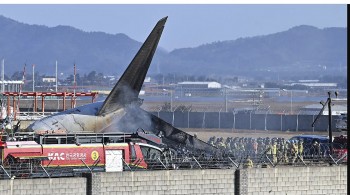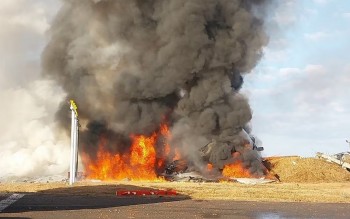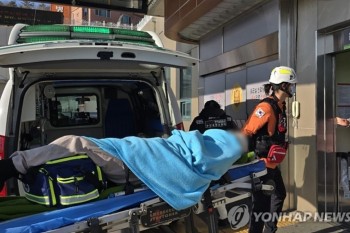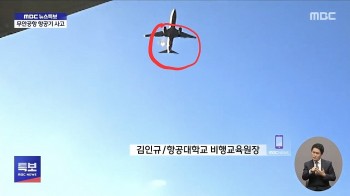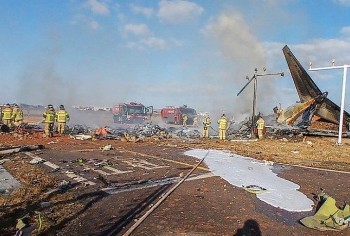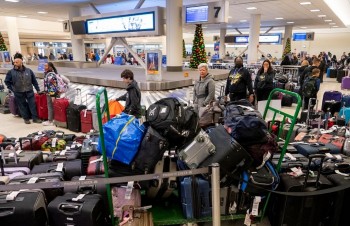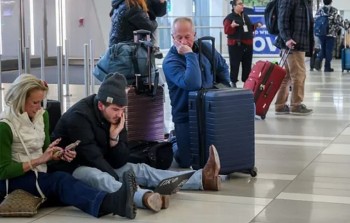South Korea Plane Crash: Concrete Wall Suspected of Worsening Plane Damage
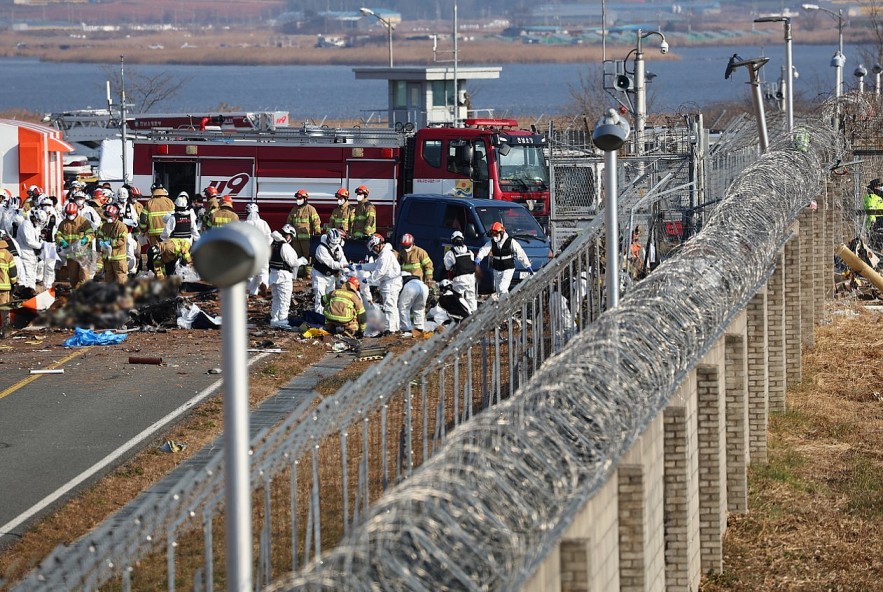 |
| Concrete wall suspected of worsening plane damage |
A rare concrete wall located at the end of the runway at Muan International Airport is suspected to have significantly worsened the impact of Jeju Air Flight 7C2216's crash landing on Sunday morning, which claimed 179 lives and left only two survivors among the 181 passengers and crew.
The Boeing 737-800, en route from Bangkok, attempted a belly landing after reportedly suffering multiple malfunctions, including issues with its landing gear and engines. As the aircraft skidded down the runway, it collided with the nearly 2-meter-tall concrete wall, which housed several metal antennas known as "localizers" designed to guide planes during landing. The collision caused severe damage, ultimately leading the plane to burst into flames after striking the perimeter fence.
Debate Over the Concrete Wall
Experts have criticized the presence of a rigid concrete wall at the end of a runway, emphasizing that such structures are atypical and can increase the severity of accidents. While similar localizers exist at other airports, such as Incheon and Gimpo International Airports, they are mounted at ground level or positioned much lower to minimize potential hazards. At these airports, localizers are made of lightweight metal and designed to collapse upon impact, reducing the risk of catastrophic damage.
In 2016, for example, a UPS cargo plane crashed into localizers at Incheon Airport, but the design of the structures allowed all five crew members to escape unharmed. In contrast, the solid construction of the wall at Muan Airport appears to have played a major role in the extensive damage and loss of life.
“We found no safety violations related to the wall,” a representative from South Korea’s Ministry of Land, Infrastructure, and Transport said during a Monday briefing. The ministry has announced plans to inspect similar concrete structures at other provincial airports to ensure safety standards are being met.
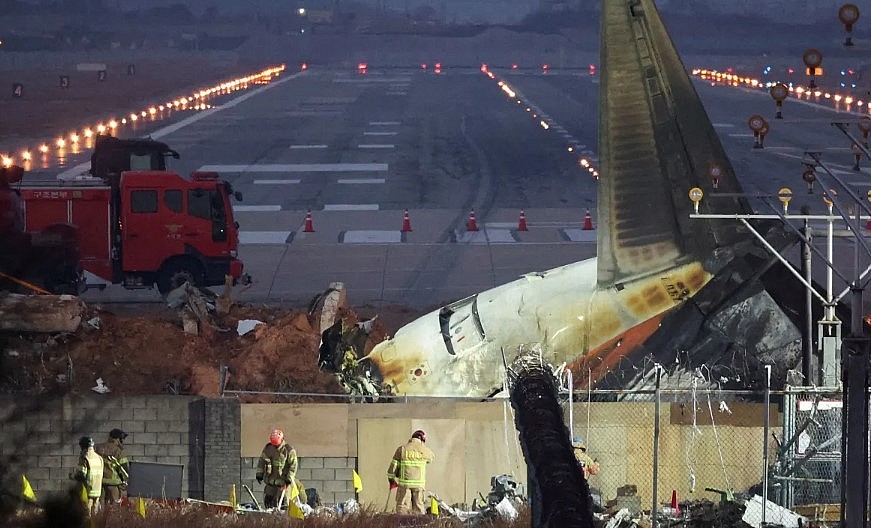 |
| Jeju Air plane crash raises questions about concrete wall at the end of the runway |
Emergency Response Questions
The accident has also raised questions about the emergency response measures taken during the crash. Some have criticized the decision not to use a foam path on the runway, a practice often employed to reduce the impact of belly landings. However, officials defended this choice, stating that foam paths can increase sliding during such landings and were therefore not applicable in this case.
Potential Causes Under Investigation
While the investigation is still in its early stages, preliminary evidence suggests a bird strike may have caused critical damage to the plane’s engines, contributing to the crash. Aviation experts caution that the full sequence of events has yet to be determined, but the collision with the concrete wall is believed to have been a decisive factor in the high number of fatalities.
In video footage of the crash, the plane is seen skidding along the runway and gradually slowing down until it strikes the wall, causing a violent impact. John Cox, an aviation safety consultant and experienced Boeing 737 pilot, noted that most of the fatalities were likely caused by “blunt force trauma” from the collision.
Comparisons to International Standards
Globally, barriers located past runways are often designed to mitigate such risks. Airports like New York’s LaGuardia have installed Engineered Material Arresting Systems (EMAS), which use crushable material to slow planes and prevent them from overshooting into dangerous areas. These systems have proven effective in averting disasters, such as in 2016, when then-vice presidential candidate Mike Pence’s plane overran the runway but was safely stopped by EMAS.
In contrast, the barrier at Muan International Airport lacked frangible properties, meaning it was not designed to collapse upon impact. This has drawn scrutiny from experts, who argue that such design flaws likely exacerbated the severity of the crash. Investigators are expected to focus on this issue as they examine the broader safety standards at Muan and similar airports.
Preventable Tragedy?
Some experts argue that the collision with the concrete wall was a critical turning point in the crash. Had the wall been designed to break apart or replaced with a more forgiving material like EMAS, the fatalities could potentially have been minimized. “Everything seemed to be going relatively well until the point of impact with the wall,” Cox noted, emphasizing that alternative barrier designs could have saved lives.
Looking Ahead
As the investigation continues, it is expected to shed light on the structural and operational factors that contributed to the disaster. South Korea’s aviation safety record has historically been strong, but the Muan crash highlights the need for stricter design standards for airport infrastructure, particularly in regional facilities. The findings from this tragedy could lead to significant reforms, ensuring that future accidents are met with better safeguards to prevent such devastating outcomes.

